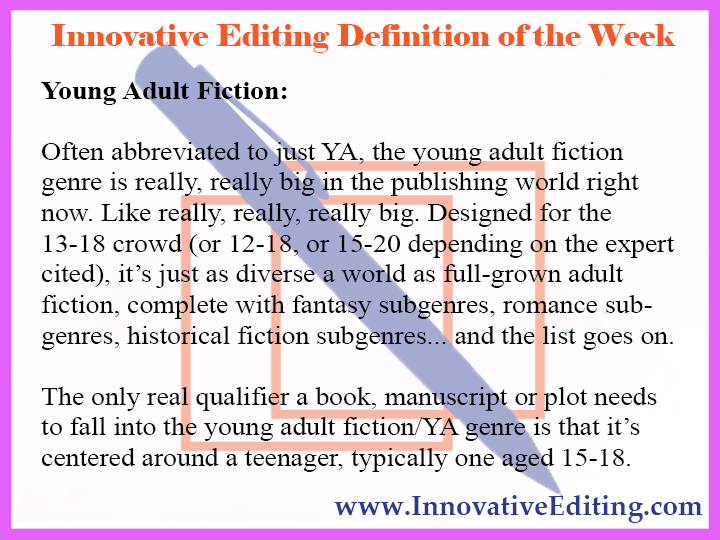
We’re officially up to one of my favorite groupings out there, right alongside fantasy and historical fiction: the young adult fiction genre.
Before I write another word, I should probably acknowledge what some writers, publishing professionals and other insiders are already yelling at me… “Young adult fiction isn’t a genre!”
I’ll grant them that to some degree. I’ll even go a step further by acknowledging how my last three supposed genres – board books, picture books and middle-grade fiction – aren’t actual genres either.
Technically, they’re markets. But technically, nobody calls them markets. They call them genres.
Besides, “technically,” getting irritated that young adult fiction is so commonly deemed a genre is rather silly. In the grand scheme of things, when we have so many other more weighty topics to argue about, does this one example of literary terminology really matter?
You’re more than welcome to form your own opinion on the debate, of course, but I would argue no. As evidenced by the Definition below.
Young Adult Fiction
Often abbreviated to just YA, the young adult fiction genre is really, really big in the publishing world right now. Like really, really, really big. Designed for the 13-18 crowd (or 12-18, or 15-20 depending on the expert cited), it’s just as diverse a world as full-grown adult fiction, complete with fantasy subgenres, romance subgenres, historical fiction subgenres... and the list goes on.
The only real qualifier a book, manuscript or plot needs to fall into the young adult fiction/YA genre is that it’s centered around a teenager, typically one aged 15-18.
Incidentally, this is the market where Harry Potter fits in.
And Twilight.
And The Hunger Games.
And The Fault in Our Stars. And Divergent. And The Lightning Thief. And The Maze Runner. And 13 Reasons Why. And City of Bones. And The Glass Throne. And The Selection.
And… and… and… There are plenty more where those came from. If the young adult fiction genre isn’t one you frequent, then just take my word for it. It’s a big deal these days.
Now, the young adult novels called out by name above are ones I’ve either read, are so popular they immediately came to mind, or they made a GoodReads list I then subsequently identified as actual young adult fiction instead of being misclassified. None of them are meant to be endorsements, however.
Especially concerning The Glass Throne.
That first book was phenomenal. But the series turned into ridiculously poor writing, plotting, characterization, content and everything else by Book 3.
Okay. Rant officially over. Back to the larger market.
If you analyzed each and every one of the examples given above, you might notice two different trends: young adult fantasy (Harry Potter, Twilight, The Lightning Thief, City of Bones and The Glass Throne) and young adult post-apocalyptic/dystopian stories (The Hunger Games, Divergent, The Maze Runner, The Selection).
Only two can be categorized as young adult literary fiction: The Fault in Our Stars and 13 Reasons Why. And none of them fall into the young adult historical fiction category, although such books do exist.
With that said, when it comes to young adult romance, some bookstores feature entire bookshelf rows devoted to nothing but those stories.
We’re going to analyze such trends further – and how you can utilize them – with Friday’s Writing Rule. So stay tuned to our young adult fiction genre posts this week.
Even if young adult fiction isn’t a genre.

